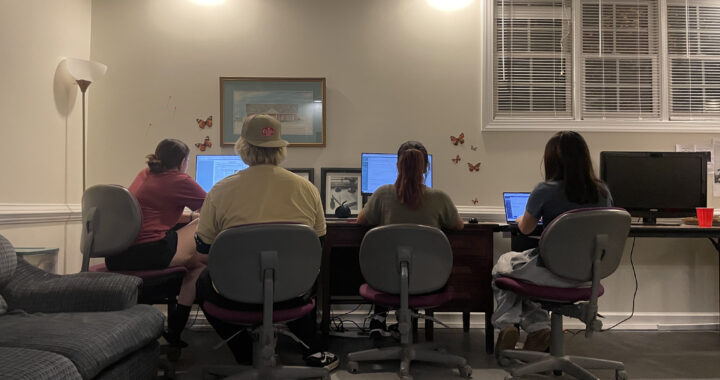Crowdfunding kick starts creative projects into bloom
3 min readBy BRITTANY VITNER
It is a hard economic and political environment for new creators, new artists and new projects.
 Shows go off the air. Amateur artists never get that lift off the ground for their projects.
Shows go off the air. Amateur artists never get that lift off the ground for their projects.
Despite desires and spending budgets for more content, some work never comes into being, mostly blocked by uninterested large companies.
There is a need for a simpler way for creators to fund their projects, and Kickstarter is one of the latest crowdfunding campaigns that aims to do just that.
Kickstarter is a place where consumers can directly fund a project they want to see through fruition.
Kickstarter campaigns are a fun way for consumers to interact with creators and decide what content gets made.
It is a way for people to give life to projects that might otherwise never see the light of day due to economic problems, Hollywood politics or a lack of communication between creators and supporters.
It is also a way to send a message to companies that there is major fan support for certain franchises or consumer interest in certain items.
According to the Kickstarter website “4.9 million people have pledged $802 million, funding 49,000 creative projects,” since their launch in 2009
The system works by someone creating a page for their project, explaining what it is they want to create, what, if any, rewards they plan to give people who provide funding, their initial goal and, if they have any, stretch goals.
All to be hopefully completed within a specified campaign time.
Donors can contribute only a few dollars or a couple hundred.
The amount of the donation decides what rewards donors receive from the project, if the creator is providing any.
There are other similar crowdfunding websites, although Kickstarter seems to be the most well-known in the U.S. Indiegogo is also very popular, and the difference is more along the lines of where projects come from, geographically.
Projects are very diverse, whether it is funding the creation of a video game, helping send someone to college or funding a dog’s knee surgery.
I recently helped fund my first campaign on Indiegogo for the print campaign of a full-color webcomic from Finland/Sweden called “A Redtail’s Dream.”
The project needed $29,000 to fund the print run of books for the webcomic.
It started with a thirty-day time limit, but hit its goal a little after the 24 hour mark. It has since hit all of its extra goals.
For most projects, funding the project means receiving an early copy of or access to whatever is funded, whether it is a version of the advertised pair of sunglasses, a copy of the video game or a DVD of the film.
It is not unusual for projects to be over funded, even by a significant margin, and especially early into their campaigns.
This allows the creation of “stretch goals,” which allow the creators to add more to the project.
More money in the case of “A Redtail’s Dream” meant more additions to the book itself, in the form of extra mini-comics, an extended epilogue and foiling on the cover.
It is also not unusual for projects to be underfunded and not hit their goal.
“Looking for Group,” while experiencing success in other campaign, recently attempted a kickstarter for a video game based on the webcomic, and fell short of their goal.
As a result, the project never came to fruition.
For many projects, this typically means they receive none of the funding offered by contributors, and money is refunded.
It is also important to note that one should be careful when supporting kickstarters.
It is not entirely unusual for a funded project to go wrong.
Projects can encounter drama, leading to a collapse of the creation team and no final project.
In that case, money, even though it was spent, is gone before the item comes into existence.
The best idea when looking through campaigns is to fund ones with clear goals in mind and examples of previous work.
A project with detailed explanations about what they are going to do with the money is a much safer bet than a simple concept that could easily go nowhere.
The consumer voice is one that can be heard, and crowdfunding sites are great places for that to occur.











